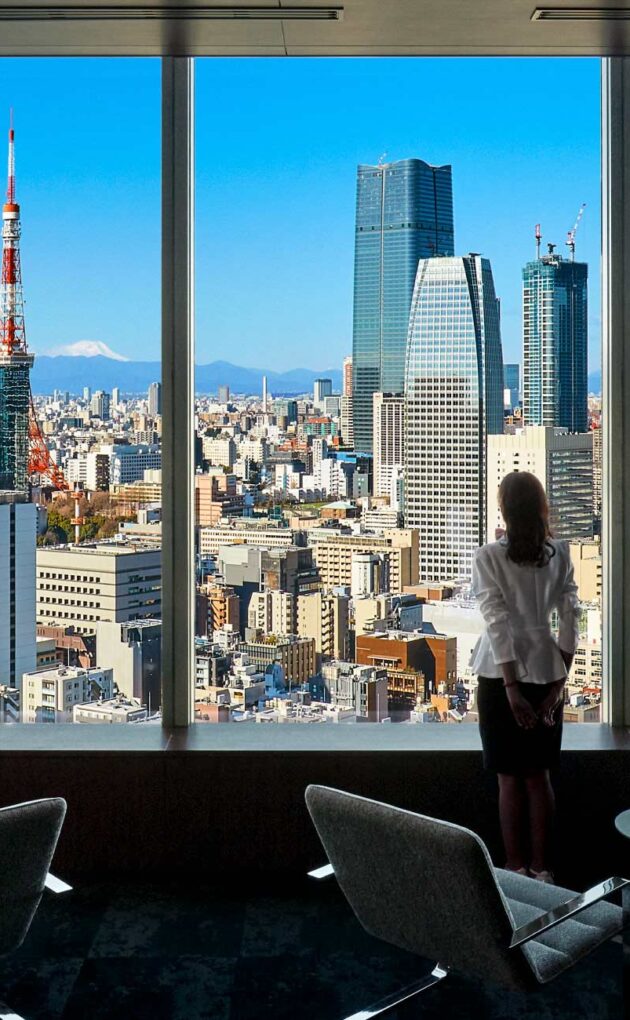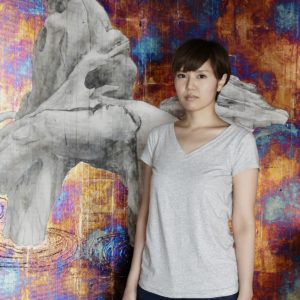Close


The 22nd artist room on the theme of “Wabi-Sabi”, which was started on production by artist Conami Hara on April 5, 2016, continued the work for about 4 months while staying at the hotel and commuting to and from it, and completed it on July 29, 2016.
“Through the repeated discussions with the hotel team, I came up with the match of images of karesansui (arid landscape) and the sulfurized silver foils, which reminded me of the theme Wabi-Sabi”, says Hara. Hara painted the walls with her recently-favored driftwood motif to resemble the garden stones at Ryoanji, one of the popular rock garden in Kyoto. Using silver foils, one of Japanese traditional art techniques as well as painting materials, Hara had turned each wall into a rainbow of reds, browns and blues.
There are total of 15 driftwoods painted on the wall in this room. The ripple marks on the sand of the rock garden was expressed by slathered paint on the walls. In addition, just as one of the 15 stones in Ryoanji’s rock garden is always hidden no matter what position you view it from, one piece of driftwood is hidden in this room. A special atmosphere in the room is created by the unique appearance and texture of the silver foils, which are produced by the chemical reaction. The beautiful atmosphere felt here is not what can be manually manipulated. The changes with time that occur in silver foil left all over the space, and the passage of time, are also part of the work.
In the Artist Room Wabi-Sabi, you can experience a unique feeling, as though you are in a miniature universe.
Staff recommendation comment
The Artist Room Queen Wabi-Sabi is one of the most popular rooms among foreign travelers and our staff. When you enter the room, you feel like you’re in space. The entire room has a luxurious and glittering color scheme, so you can stay in the room for a long time without getting bored. The room is decorated with the motif of driftwood inspired by the stone garden of Ryoanji Temple in Kyoto. In the Orient, the number 15 is supposed to mean perfection. However, there are only 14 pieces of driftwood depicted in this room. The remaining one is painted in an invisible place to symbolize incompleteness. When in this room, it would be interesting to count the 14 pieces of driftwood and try to find out where the remaining one is hidden. One of the best features of this room is that the walls are covered with silver leaves. Therefore, the color of the room will change as the days go by due to oxidation, humidity, and sunlight. In other words, the design in its current state can only be seen now, and the color will probably change further in a year. In this sense, imperfection is expressed in this design. When in Artist Room Queen Wabi-Sabi, why not spend some time paying attention to the unique colors that can only be seen at that moment?
Room #3104 | Completion Date: 2016.07
In this room, there’s no story.
In this space, there’s only driftwood, rusty foil, and time which slips by.
In the Orient, the number 15 represents perfection.
The karesansui (arid landscape) is said to represent the universe. The 14 pieces of driftwood, which take the Ryoanji rock garden, the typical karesansui, as motif, symbolize imperfection.
The changes with time that occur in silver foil left all over the space, and the passage of time, are also part of the work.
We cannot go against the years.
After time has whittled away the outer layers, what’s left behind at the core?In an imperfect world like the universe, everyone wanders around seeking something meaningful.
In this little universe, try to drift with the driftwood.
Conami Hara

Born in 1987, in Hokkaido, Japan, and now live in Tokyo.
Material and techniques of Japanese painting are used in her artworks.